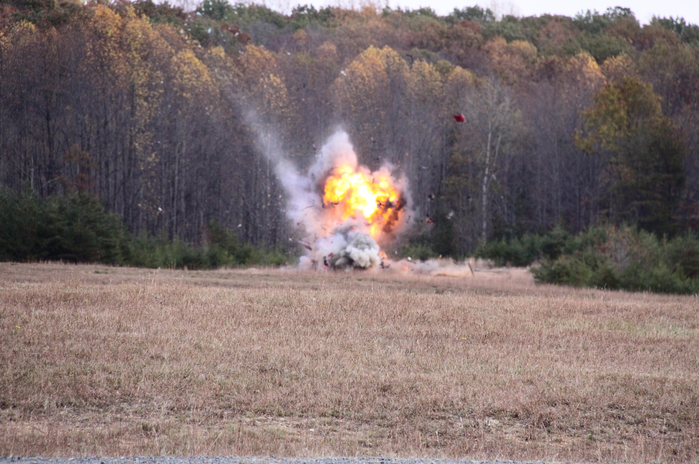Terrorist Explosive Device Analytical Center (TEDAC)
When a bomb goes off, it leaves clues behind. DNA, fingerprints, and other materials can help identify bombers. Finding and using this information takes top-notch scientific expertise.
The FBI Laboratory’s Terrorist Explosive Device Analytical Center (TEDAC) is a multi-agency center that coordinates bomb-related evidence and intelligence collection for the U.S. government.
TEDAC’s experts analyze bombs. They also support law enforcement, the intelligence community, military, border protection, and science and technology partners.

Created in 2003 and located in Huntsville, Alabama, TEDAC provides direct support in:
- Bombing crime scene investigations
- Searching bomb factories and safe houses
- Deploying to major bombings, both in the United States and internationally
- Providing expertise on major bombing scenes
- Training FBI and law enforcement personnel
TEDAC also provides expert witness testimony in court regarding the results of examinations.
TEDAC’s Work
Analysis
TEDAC’s scientists and bomb experts analyze every piece of evidence they receive from a bomb scene. To do this, they look at:
- Chemicals
- DNA
- Electronic data
- Latent fingerprints
- Toolmarks
- Trace evidence
Intelligence
TEDAC’s analysis helps generate intelligence to:
- Connect bombs to bomb makers
- Link explosives from separate incidents
- Learn how a device was created
- Share critical information with the military, law enforcement, and others who need it
Partnerships
TEDAC personnel:
- Train partners on crime scene and terrorism investigations
- Assist international agencies
- Share fingerprint images with other agencies for sharing biometric intelligence
- Link bombing incidents when it’s difficult to collect biometric information
- Create and characterize explosives to understand their hazards and learn the best detection methods, in cooperation with the Department of Homeland Security
Danger Beneath the Surface
Get an interactive look at how the FBI’s Underwater Post-Blast Investigation course prepares the nation's public safety bomb tech divers to counter threats in their home harbors and waterways.
Hazardous Devices School
The FBI’s Hazardous Devices School at Redstone Arsenal in Huntsville, Alabama is the only facility in the country that trains and certifies the nation’s public safety bomb technicians.



